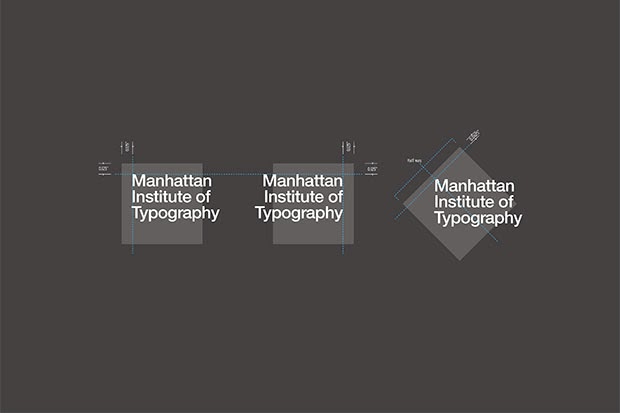Futura is a geometric sans-serif typeface designed in 1927 by Paul Renner. It was designed as a contribution on the New Frankfurt-project. It is based on geometric shapes that became representative of visual elements of the Bauhaus design style of 1919–33. Commissioned by the Bauer Type Foundry, in reaction to Ludwig & Mayer's seminal Erbar of 1922, Futura was commercially released in 1936.
The family was originally cast in Light, Medium, Bold, and Bold Oblique fonts in 1928. Light Oblique, Medium Oblique, Demibold, and Demibold Oblique fonts were later released in 1930. Book font was released in 1932. Book Oblique font was released in 1939. Extra Bold font was designed by Edwin W. Shaar in 1952. Extra Bold Italic font was designed in 1955 by Edwin W. Shaar and Tommy Thompson. Matrices for machine composition were made by Intertype.
Although Renner was not associated with the Bauhaus, he shared many of its idioms and believed that a modern typeface should express modern models. Renner's initial design included several geometrically constructed alternative characters and ranging (old-style) figures, which can be found in the typeface Architype Renner.
The typeface is derived from simple geometric forms (near-perfect circles, triangles and squares) and is based on strokes of near-even weight, which are low in contrast. This is most visible in the almost perfectly round stroke of the o, which is nonetheless slightly ovoid. In designing Futura, Renner avoided the decorative, eliminating nonessential elements. The lowercase has tall ascenders, which rise above the cap line. The uppercase characters present proportions similar to those of classical Roman capitals.
Futura is an exceptionally versatile typeface. Its bold and condensed variants are especially powerful display designs. Futura is also a good choice for space-sensitive environments. Its simple letterforms allow it to be set at surprisingly small sizes with little drop in legibility levels. Futura also works well for short blocks of text copy, captions and pull-quotes.
Though Erbar was the first of the new geometric sans-serif faces, the enormous success of Futura fostered the creation of many new geometric sans-serif faces by competing foundries including Kabel, Metro, Vogue, Spartan, Twentieth Century, and Century Gothic among others. Some were near identical copies as in Spartan and Vogue, but others, were uniquely different including Nobel and Kabel.
Typeface designer Adrian Frutiger acknowledges Futura as one of his inspirations for his 1988 typeface Avenir. More recently Futura has been the basis of Ikea Sans and Opel Sans, fonts designed (for Ikea and Opel, respectively)
The subway system of the city of Toronto has their own Toronto Subway Font based on Futura.
Tasse is a revival of Steile Futura.
Beteckna is inspired by Futura.
Braggadocio is based on Futura Black.
Fujiyama is a clone of Futura.
The 2000 typeface Gotham is similarly geometric and based on 1920s signage.
Passata is a modernised version of Futura specifically designed to replace Futura as the corporate branding font of Aarhus University.
Futura's success spawned a range of new geometric sans-serif typefaces from competing foundries, and remains one of the most used sans-serif types into the twenty-first century. Particularly during the 1950s it was used extensively by the publishing industry as a general purpose font. Futura remains an important typeface family and is used on a daily basis for print and digital purposes as both a headline and body font. The font is also used extensively in advertisements and logos, notably by IKEA (until 2010), Volkswagen, Royal Dutch Shell, Crayola and HP in their print ads.
For example, the font is used for the title logo of the 1999 film American Beauty. It was also used in various TV shows including Doug, Lost, Warehouse 13, the American version of Sesame Street, etc. Futura is also featured ubiquitously throughout the film adaptation of V for Vendetta, used for everything from the title logo and ending credits, to signs, newspapers, computer screens and other props. Wes Anderson is also fond of the font and has used it in all of his films. Futura was also Stanley Kubrick's favorite typeface. In 1997, the Pittsburgh Steelers (an American Football team) switched to rounded numbers on the jersey to match the number font (Futura Condensed) on their helmets. In 2012 the newly formed Western Sydney Wanderers Football Club use Futura on their logo and club documentation.
It is also used on the Bell Canada and the current TV5 (Philippines) logo. Futura is also Animax Asia's main typeface. All three of Vampire Weekend's albums use Futura on the covers, with the first two being exclusively Futura. The Boston Celtics' championship banners are also in Futura Condensed. 2008 science fiction-fantasy film City of Ember features Futura Medium in many prints through the story. The condensed version is the main font in the 2011 role-playing video game The Elder Scrolls V: Skyrim, as well as being used extensively throughout the Watchmen graphic novel as well as the movie based on it. In season 2 of Stargate: Universe, Episode "Common Decent – Part 1" the ancestors of the crew state that one of the two continents was named "Futura". There are several references to the name being a font in the episode. RAI, the Italian public service broadcaster, also uses this font from 2000.
Video:
http://www.youtube.com/watch?v=IhAL8HI1MAY






























